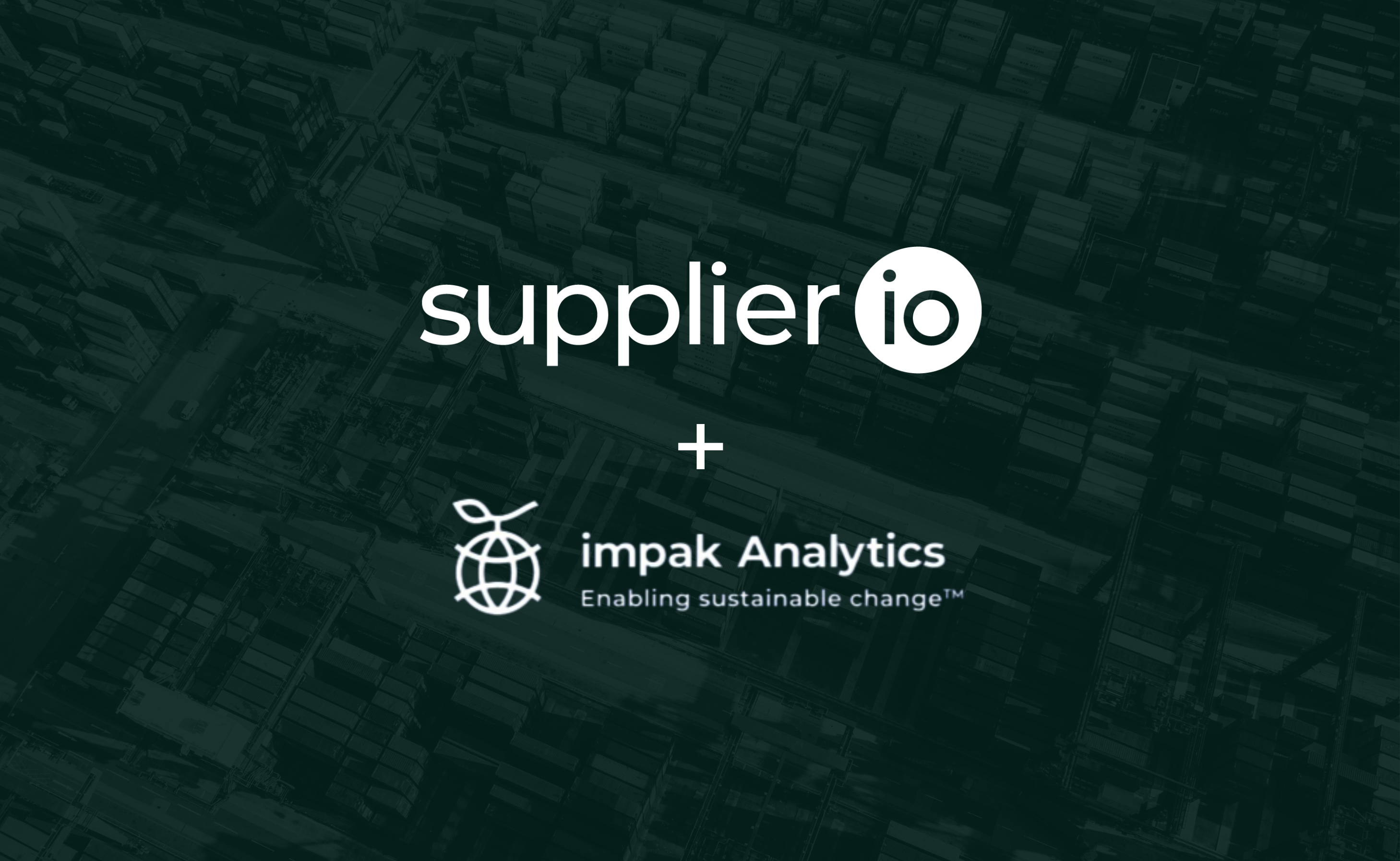New report reveals where companies face ESG risks in their supply chains
New report from Supplier.io and Impak Analytics offers a comprehensive look into these risks and provides actionable strategies for procurement teams to tackle them effectively.

Managing environmental, social, and governance (ESG) risks within your supply chain is crucial for improving sustainability and resilience.
The report “Supplier ESG Risk: Analysis and Mitigation Strategies for Procurement Teams” by Supplier.io and impak Analytics, a leading ESG ratings company, offers a comprehensive look into these risks and provides actionable strategies for procurement teams to tackle them effectively.
Uncovering ESG Risks
Your organization faces a growing challenge in managing ESG risks, which are not only confined to your own operations but extend deep into your supply chain. Supplier practices, whether related to labor conditions, environmental impact, or ethical conduct, can significantly impact your company’s reputation, financial performance, and long-term sustainability. The complexity of global supply chains often obscures these risks, making it difficult to gain a clear understanding of potential vulnerabilities and proactively address them.
This lack of visibility is further compounded by increasing pressure from stakeholders for greater transparency. Companies are expected to not only monitor their own ESG performance but also ensure that their suppliers adhere to high standards. Procurement plays a critical role in uncovering these risks and ensuring compliance with ESG standards.
Key Findings from the Report
The report reveals findings from ESG risk assessments conducted at over 200 companies across 11 industries. It highlights the material environmental, social, and governance risks affecting these companies and provides insights into supplier activities contributing to these risks. The data presented in this report is designed to help you identify risks in supply chains, benchmark your practices, and drive continuous improvement in your sustainability initiatives. Below is a summary of the report findings, more detail can be found in the full report.
Environmental Risks
Environmental risks are a major concern for companies, with greenhouse gas (GHG) emissions affecting 73% of organizations. Other critical risks include inadequate product lifecycle management, water withdrawal and consumption, and pollution. These risks are exacerbated by supply chain activities such as transportation, raw material extraction, and manufacturing processes. Biodiversity loss, waste generation, and hazardous materials management also pose substantial challenges, albeit to a lesser extent.
Social Risks
The report identifies several pressing social risks, with diversity standing out as the most critical. 71% of companies face material risks related to diversity issues, which extend beyond corporate boundaries to impact supply chains and local communities. Other significant social risks include workers’ health and safety, labor and working conditions, customer privacy and data security, access and affordability, and the repercussions on local communities.
Governance Risks
There is a growing recognition that managing environmental and social impacts within supply chains is essential. Supply chain reporting mandates like the Corporate Sustainability Reporting Directive (CSRD) mean that businesses must ramp up their supply chain oversight and report on ESG impact. Yet, 45% of companies are exposed to significant risks due to inadequate supply chain transparency and management.
Tackling ESG Risks: Strategies for Procurement Teams
The report also highlights how procurement teams are tackling ESG risks with practical mitigation strategies. They’re collaborating closely with suppliers to cut emissions, integrating climate risk assessments into supplier selection, and focusing on sustainable sourcing. For example, they might prioritize suppliers who use have high CDP Climate Scores or have Science-based GHG emission reduction targets. Diversifying the supplier base can help mitigate risks associated with climate-related disruptions, while local and regional sourcing, where possible, minimizes the environmental impact of long-distance transportation.
To address social risks, teams are using data to identify diverse suppliers and actively recruiting from underrepresented groups, setting clear diversity goals to track progress. They are addressing labor conditions by establishing robust codes of conduct, conducting independent audits of supplier facilities, and implementing whistleblower mechanisms to empower workers and ensure accountability.
Governance risks are being addressed by establishing strong supplier codes of conduct, conducting thorough due diligence and ongoing monitoring of environment and social performance. This includes regular supplier assessments and audits to ensure compliance with ethical standards.
Addressing ESG Risks in Supply Chains
Most companies are grappling with significant and varied ESG risks in their supply chains, which makes thorough risk discovery and mitigation crucial. To address these risks, procurement teams are working closely with suppliers, adopting sustainable sourcing practices, conducting regular risk assessments, and leveraging a supplier risk management platform to gain better visibility and control. Every company faces some level of ESG risk in their supply chain, understanding and managing these risks is vital to avoid disruptions, protect your company’s reputation, and enhance overall business resilience.
For a deeper dive and practical strategies, download the full report today.




